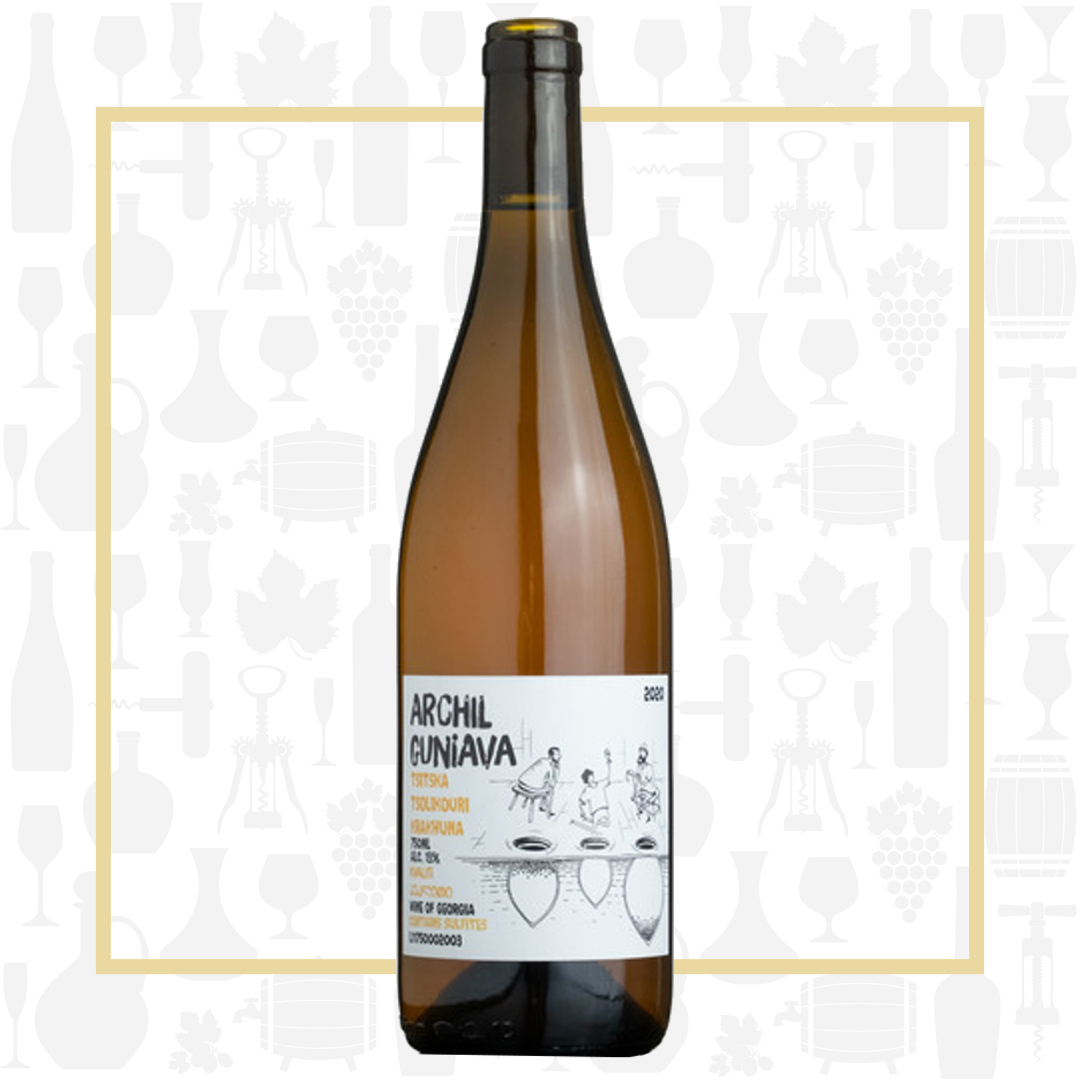Cellar Profile
Located near the tiny village of Kvaliti, in Central Imerteti, Archil Guniava's family has been supplying wine to the region, including the nearby industrial town of Zestafoni, for over a century. His grandfather built the century-old cellar and winery which remains in use, in its antique state, today. Utilizing completely natural, low-intervention methods in the vineyard and winery, Archil lovingly works with indigenous and autochthonous varieties only found in this small pocket of Georgia. These are important, as all vitis vinifera varieties used today can trace their lineage back to this area of the Caucasus Mountains. Archil has the only known plantings in the world of Mgaloblishvili — an ancient, forgotten variety that his daughter discovered and resurrected — from which he crafts a tiny production each year. All of his wines are made in the ancient, traditional Georgian method of kvevri-aging, where direct-pressed juice is left to naturally evolve over the winter in large, earthen (clay) amphorae buried in the ground. The heads and lid of the kvevri are the only thing showing above ground and periodically throughout the winter a long paddle is used to stir the lees. All wines undergo spontaneous fermentation using natural yeast and are bottled without any fining or filtration. They are known for their intense saline minerality which comes from the generous slab of limestone on which the vineyard is found. These are fresh, clean and stable, despite being created in a truly natural way. Only 11,000 highly sought-after bottles are produced each year.
Region
Imereti, situated along the upper reaches of the Rioni River, is one of the most diverse regions in Georgia, with a constantly changing topography. Winemaking has been practiced in the region for millennia and the traditional Imeretian method of utilizing kvevri is still widely used today. Archil Guniava Wine Cellar is located in the western area of Imereti, close to the banks of the Kvirila River and the industrial town of Zestafoni. This part of the region sits on a massive slab of limestone, covered by a thick layer of clay. During the Soviet occupation, there was little investment into the wineries and many vineyards fell into a state of disrepair.
Vineyard
These family vineyards sit at 300 masl, just south of the Kvirila River. Proximity to the river keeps the warm, humid air from the Black Sea from causing excessive mildew and rot. The vineyards sit on rich deposits of clay, with limestone underneath, and are always dry-farmed. The gnarly old vines here are bush-trained for the most part, some standing over six feet high, with the grapes shielded from the heat of the day by a generous canopy.
Winemaking
The grapes are hand-harvested, then taken to the winery where they are painstakingly hand-sorted to ensure no grapes with mildew or rot are allowed in the press. They are pressed off their skins and the juice is put into beeswax lined kvevri – large earthenware pots similar to amphorae – that are buried in the cool clay with just their tops showing. Fermentation is long and slow using only indigenous yeasts. The cool clay keeps the temperature of the must from rising too quickly. Once fermentation is complete, the kvevri is sealed and the wine is left to age for six months on its lees before being racked and put into another kvevri for a further six months of aging. Bottled unfined and unfiltered, this Natural wine has no stabilizing SO2 added.
Tasting Notes
Flint, pineapple and apricot on the nose of this gold-hued wine. The palate is dry, rich and textured, with refreshening acidity and zest. Notes of stone fruits, kiwi and pear, along with an underlying salty minerality and chalkiness. The finish is long and complex. Chill lightly and enjoy with grilled sausages, herbed chicken or goat cheese.
Varieties
Tsolikouri is an aromatic autochthonous grape native to the Imereti region of Georgia and one of the most widely planted in the country. It has thick skins and loose bunches, making it resistant to many of the fungal diseases that afflict other grapes, but it ripens much later and thus is in danger of frost. It gives aromas ranging between ripe apricot and peach in richer versions, to grapefruit and quince in lighter, drier styles.

